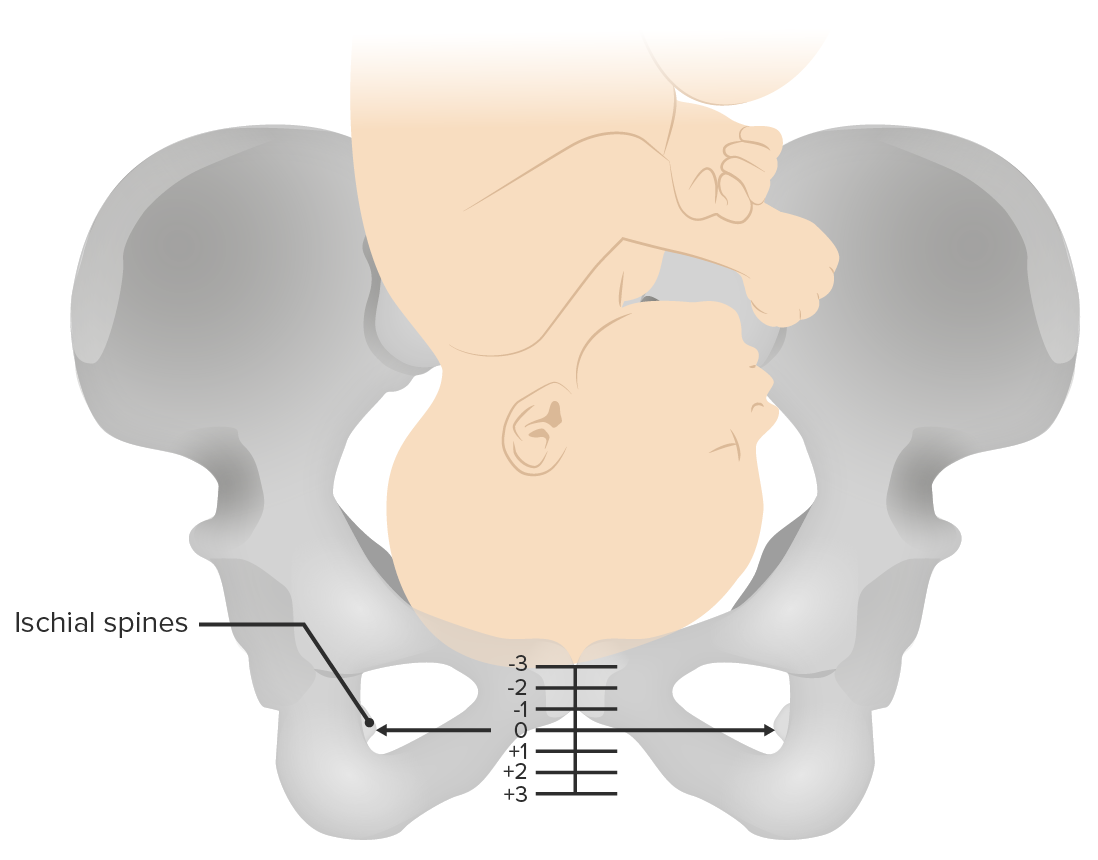Playlist
Show Playlist
Hide Playlist
Labor Stage 3: Postpartum Hemorrhage
-
Slides PostpartumHemorrhage Obstetrics.pdf
-
Download Lecture Overview
00:02 Now we'll talk about postpartum hemorrhage. 00:06 So postpartum hemorrhage can be divided into primary versus secondary. 00:10 Primary postpartum hemorrhage occurs within the first 24 hours after delivery. 00:16 Secondary postpartum hemorrhage anywhere from 24 hours up to 12 weeks after delivery. 00:21 It is important to know the difference because the causes are different. 00:25 Postpartum hemorrhage is now defined as cumulative blood loss of greater than 1000 milliliters or blood loss accompanied by signs or symptoms of hypovolemia within 24 hours after birth, regardless of the mode of delivery. 00:39 So when we think of primary postpartum hemorrhage and our causes we think of the 4 T's. 00:44 That's Tone, Tissue, Trauma and Thrombin Disorders. 00:48 We're going talk about each of these in a little detail. 00:51 Tone is important because this accounts for 80 percent of the causes of postpartum hemorrhage. 00:57 So there are some risk factors for you uterine atony. 01:00 First is the extension of the uterus. 01:02 Anything that distends the uterus such as multifetal gestation or polyhydramnios can cause the uterus to have difficulty contracting leading to uterine atony and being a cause of postpartum hemorrhage. 01:14 Also uterine infection such as in the case of chorioamnionitis. 01:18 Rapid or prolong labor. 01:20 Fibroids or Grand multiparous. 01:21 Again anything that's going to interfere with the ability of uterus to contract can lead to uterine atony. 01:27 And that can lead to postpartum hemorrhage. 01:31 Moving on to tissue. 01:32 This refers to retain products of conception. 01:35 We can see this when there's an extra lobe of the placenta that may be missing. 01:40 Or if we have an abnormal placentation such as placenta acreta, placenta increta or placenta percreta. 01:48 Trauma refers to any lacerations to the cervix, the vagina, the perineum. 01:53 This can also include hematomas. 01:56 And then thrombin disorder is that anything that will prevent clotting to take place. 02:00 Such as DIC or in HELLP syndrome. 02:06 Now when we look at our causes of late postpartum hemorrhage or secondary postpartum hemorrhage, that's infection such as metritis. 02:12 Retain products of conception. 02:15 So again if we have a lobe that's left behind. 02:18 Subinvolution or coagulation defects. 02:23 So when we talk about our treatment for postpartum hemorrhage. 02:26 The treatment is directed to the cause. 02:28 But remember no matter what the cause is, the initial step in management will always be destabilize the patient. 02:37 So when we think about our management, we first want to call for help. 02:42 We want to make sure that we have whoever we need to help us in this situation including another obstetrician, nurses and the help of our anesthesia colleagues. 02:51 You want to begin resuscitation. 02:52 If someone is bleeding, the first thing you want to do is start two large bore IV needles. 02:57 Remember as they continue to bleed, it's going to be very difficult to get IV access if you not already establish that. 03:03 You also want to give IV fluids and you want to start calling for blood. 03:08 You want to check lab. 03:09 You can to see where you're starting. 03:11 So these labs will include a CBC, a type-in screen, PT, PTT, INR, and Fibrinogen. 03:19 Now I don't know how quickly you get your labs back in your hospital. 03:24 But sometimes when we need our lab results back quicker than we can get them from the lab. 03:29 So there's a quick way you can check to see if someone is going in DIC. 03:32 It's called the Red Top Tube Test. 03:34 You take a red test tube that has a red top. 03:39 Put 2 to 3 cc of mom's blood into that test tube and you leave it alone for about 6 minutes. 03:45 You'll expect her blood to clot and stay clotted for 6 to 10 minutes. 03:50 If the blood does not clot it that time, then you can suspect that patient is going into DIC. 03:56 Next you want to consider the etiology. 03:59 Remember we're going to direct our therapy to whatever the cause of postpartum hemorrhage is.
About the Lecture
The lecture Labor Stage 3: Postpartum Hemorrhage by Veronica Gillispie, MD, MAS, FACOG is from the course Intrapartum Care. It contains the following chapters:
- Postpartum Hemorrhage
- Management of Postpartum Hemorrhage
Included Quiz Questions
Which of the following is the most common cause of primary postpartum hemorrhage?
- Uterine atony
- Retained products of conception
- Cervical lacerations
- Perineal tears
- Thrombin disorders
How much blood must be lost during a spontaneous vaginal delivery to be considered postpartum hemorrhage?
- 1 liter
- 2 liters
- 800 milliliters
- 250 milliliters
- 750 milliliters
How much blood must be lost during a cesarean section to be considered a postpartum hemorrhage?
- 1 L
- 500 ml
- 100 ml
- 250 ml
- 750 ml
Which of the following is NOT a common cause of secondary postpartum hemorrhage?
- Uterine atony
- Infection
- Retained products of conception
- Subinvolution of the uterus
- Coagulation disorders
Which of the following is a common cause of uterine atony within the first 24 hours post-partum?
- Chorioamnionitis
- Oligohydramnios
- Primiparity
- Succenturiate lobes of the placenta
- Placenta increta
Customer reviews
4,0 of 5 stars
| 5 Stars |
|
0 |
| 4 Stars |
|
1 |
| 3 Stars |
|
0 |
| 2 Stars |
|
0 |
| 1 Star |
|
0 |
v good informative v good reasoning good presentation ..ellaborate and more reachabble






